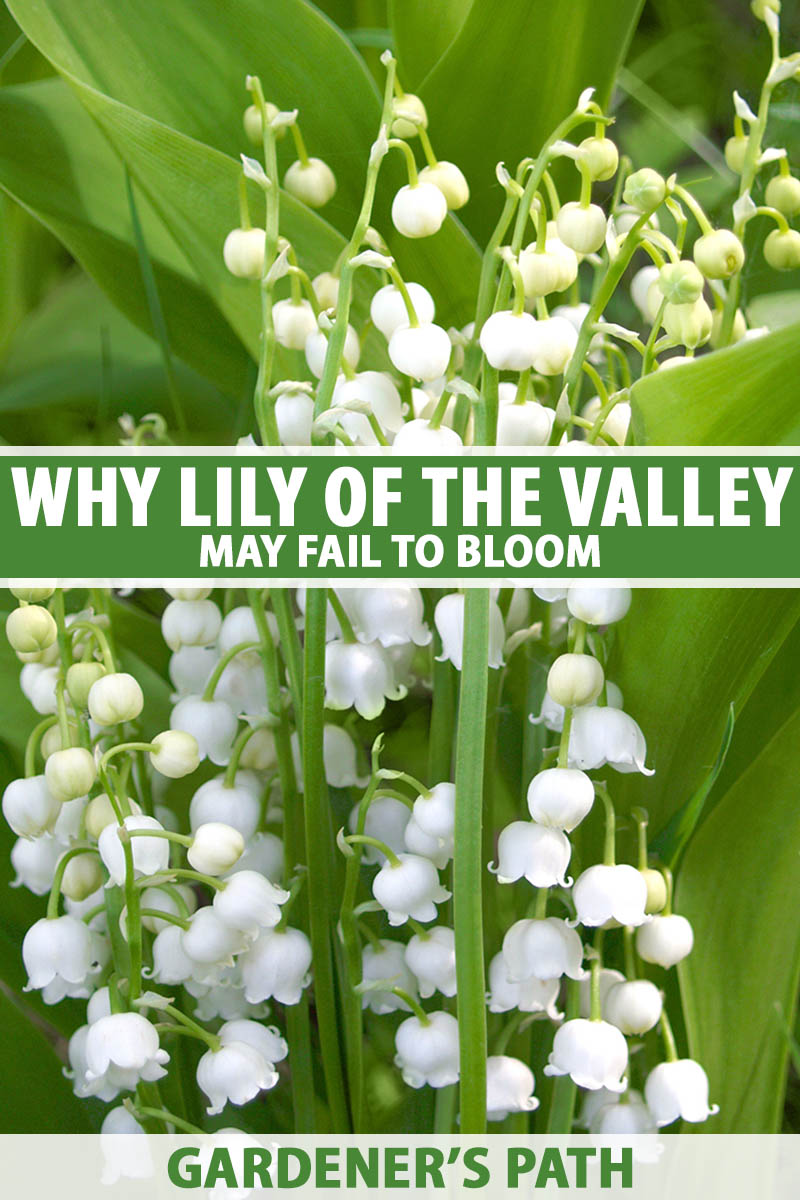A prized planting for shady sites, lily of the valley makes a beautiful, cool green ground cover with small spires of tiny, bell-shaped flowers and a delightful perfume.
But if they’re not blooming, you’re missing a treat in the spring garden!
An easy care perennial, the pretty creamy white or pink flowers appear readily when just a few specific growing conditions are met: a shady setting, moist soil when the plant is setting buds, and adequate space for the roots to spread freely.
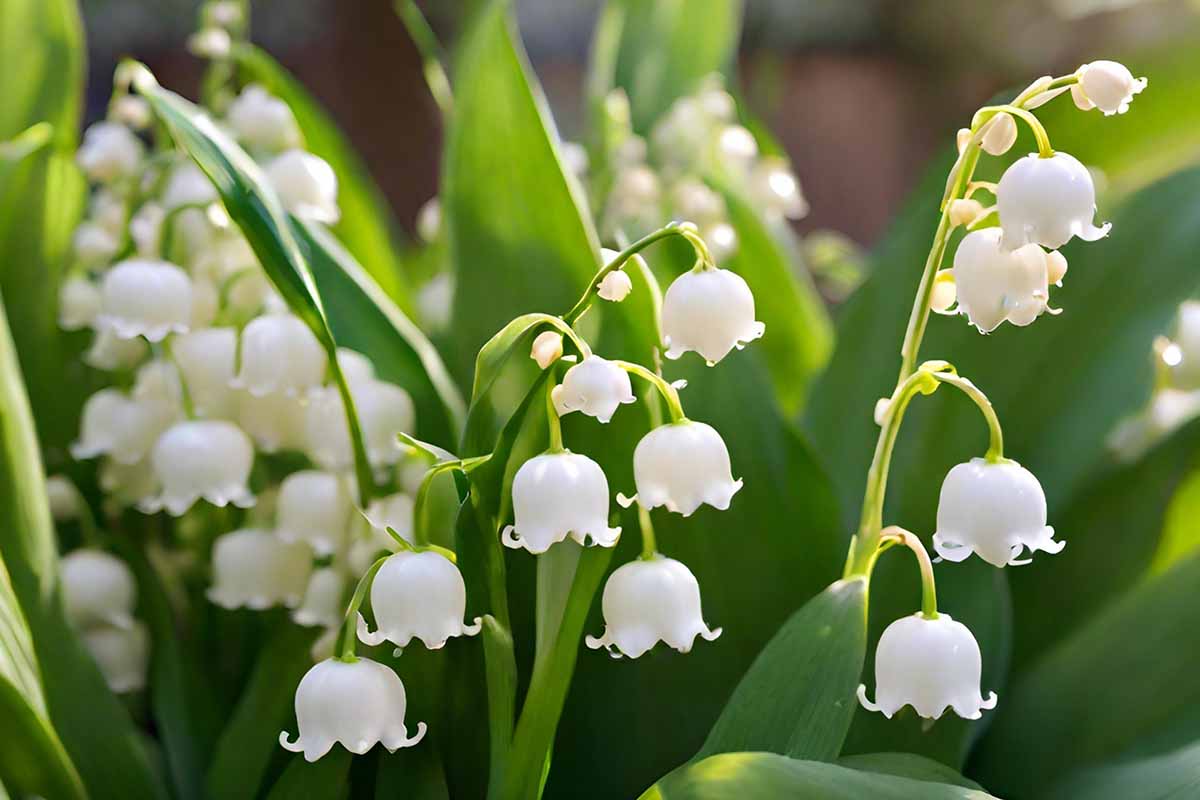
We link to vendors to help you find relevant products. If you buy from one of our links, we may earn a commission.
Give them what they like and you’ll enjoy a beautiful carpet of adorable, fragrant flowers. But if something is amiss, the plant may fail to flower.
Keep reading to learn some easy fixes for lily of the valley that won’t bloom!
Here’s a preview of what’s ahead:
Reasons Why Lily of the Valley May Fail to Bloom
Overall, lily of the valley, Convallaria majalis, is a low maintenance perennial.
Affected by very few disease or pest problems, they spread fast in optimal conditions. The thick, fleshy roots quickly fill in beds and plants come back fuller every year.
If left to grow unchecked, lily of the valley plants quickly form a handsome ground cover that effectively chokes out weeds.
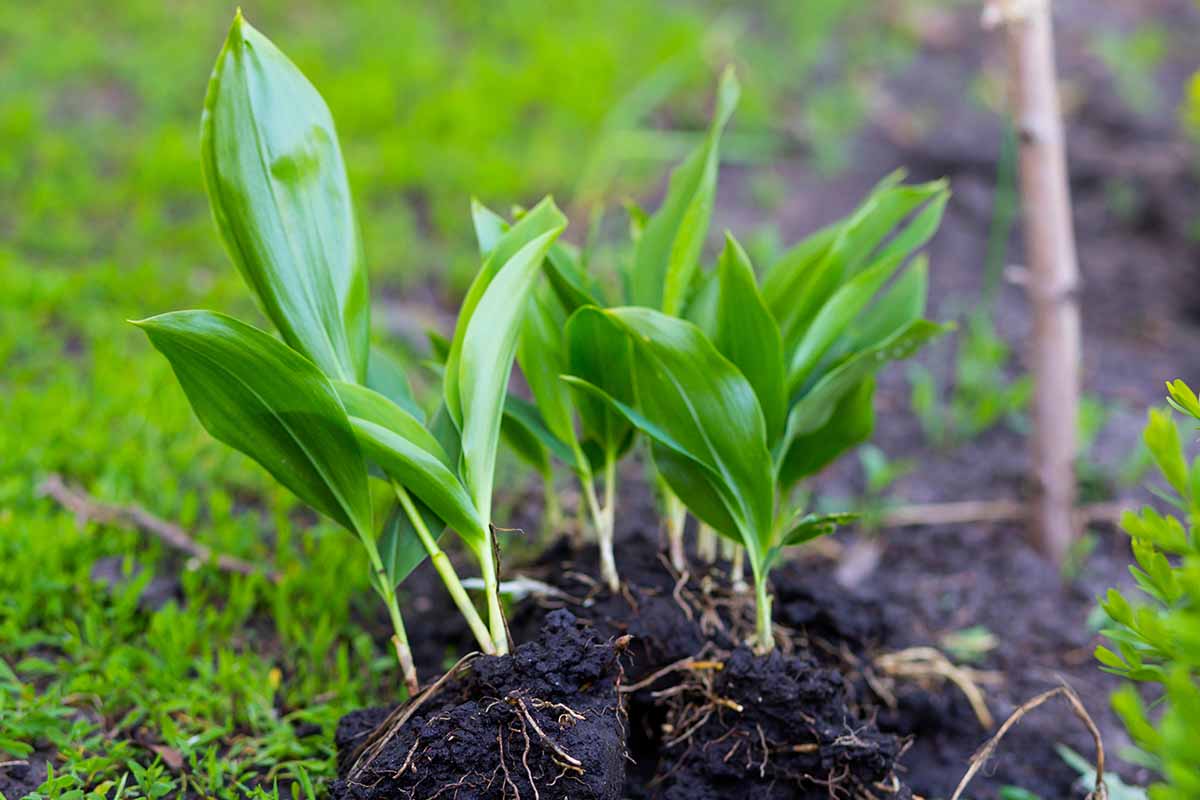
To grow into vibrant plants with plenty of flowers, lily of the valley needs partial shade, consistent moisture, and loose soil with a slightly acidic pH of 6.0 to 6.5.
While C. majalis has a well-earned reputation for being tough and reliable, problems like root rot can arise if they’re planted in overly wet soil – a well-draining environment is a must for healthy plants.
As light feeders, a one- or two-inch layer of compost in early spring meets all their nutritional requirements.
For more information about how to cultivate lily of the valley, our growing guide has all the planting and care details.
Flowering in spring amid lush foliage, plants go dormant in fall and during winter, but can remain evergreen in areas with mild winters.
They have excellent cold hardiness and are suitable for planting in USDA Zones 2 to 9, but in hot weather the plants tend to shrivel and die back.
If your plants aren’t producing flowers, it’s likely that there’s something amiss in their growing environment. It’s usually easy to solve the issue and they’ll provide you with plenty of blooms next year!
Here are the top five reasons why these plants may fail to bloom:
1. Too Much Light
For an abundance of flowers, lily of the valley needs to grow in the shade.
A few hours of early morning sunshine is fine, but for most of the day it needs the cooler temperatures of shady locations to develop a profusion of blooms.

And when the plants receive too much sunshine, bud set may not happen.
To ensure ample bud set, provide plants with part to full shade from about 10 o’clock in the morning onwards, to avoid hot afternoon sun.
2. Plant Maturity
When new plantings fail to bloom, it could be that they’re simply not mature enough to flower yet.

Generally, after planting it can take new stock up to two years to start blooming.
In the meantime, ensure they have optimal conditions for vigorous growth and be patient, when they’re well-established, flowers will follow.
3. Soil Moisture Issues
Although lily of the valley plants have good drought tolerance once established, they prefer consistently moist soil – and this is particularly important during bud set.
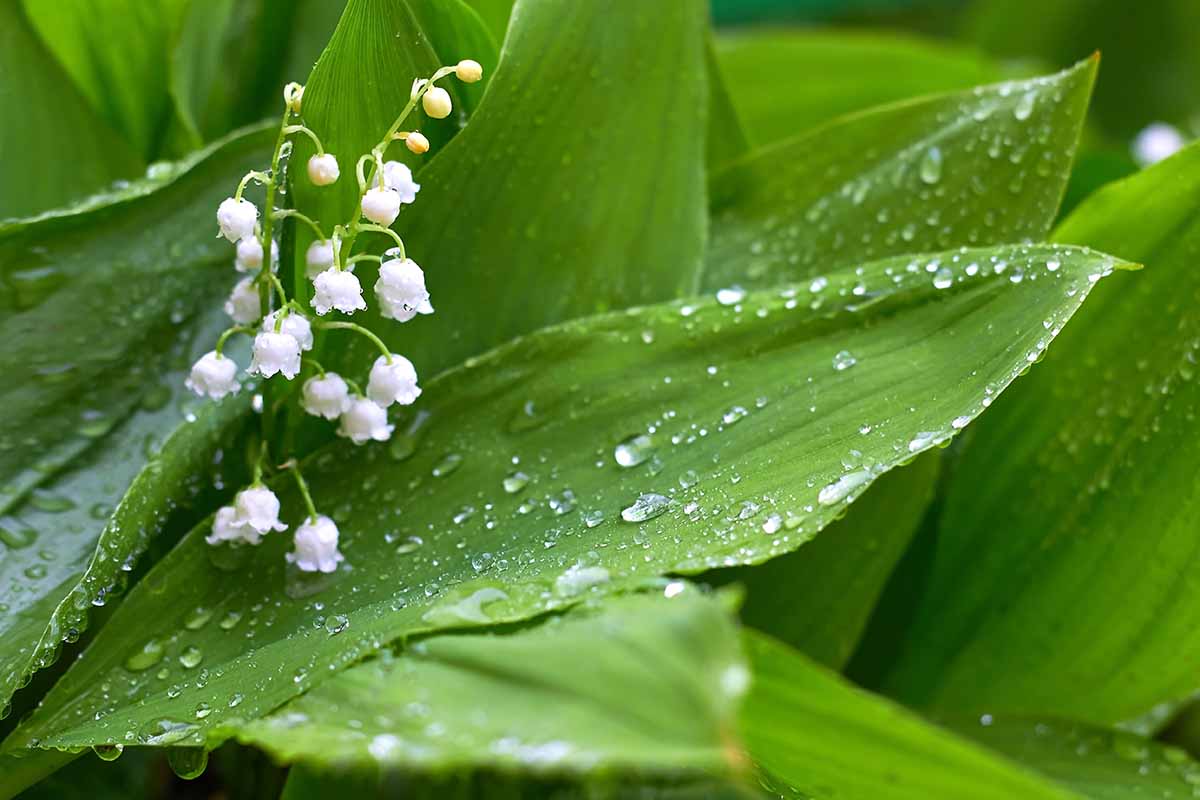
If you’ve had a dry winter or spring, the soil may have become parched, which can negatively impact bud and flower development.
Should spring rains be scant or absent, make sure you water your plants deeply on a weekly basis, providing one to two inches of water. Consistently moist, well-draining soil is key for bud formation.
Continue to provide regular applications of water until after the flowers have faded.
If you’re unsure about moisture levels in the soil, use a moisture meter to give you accurate information.
This Active Air 3-Way Meter measures water levels plus soil pH and light levels, and it’s available at Arbico Organics.
Learn more about using moisture meters in our guide.
4. Overcrowding
One of the most common causes of under flowering is overcrowding.

Lily of the valley has thick, fleshy rhizomes called “pips” that like to spread out, forming dense mats. But when the roots become too congested, blooms can be in short supply.
When overcrowded roots grow into a tangled mat, they can suffer from a lack of oxygen and water, resulting in a loss of vigor – and fewer blooms.
To rejuvenate your lily of the valley, these fast spreaders can be divided every three to five years, splitting them in winter while they’re still dormant.
You can find all the easy instructions in our guide to dividing lily of the valley.
When replanting your divisions, give them plenty of space to expand into. Space them 12 inches apart when transplanting established clumps and four to six inches apart for individual pips.
5. Compacted Soil
Compacted soil is usually a problem in overgrown beds but it can also be caused by foot traffic or a buildup of compost and plant debris.
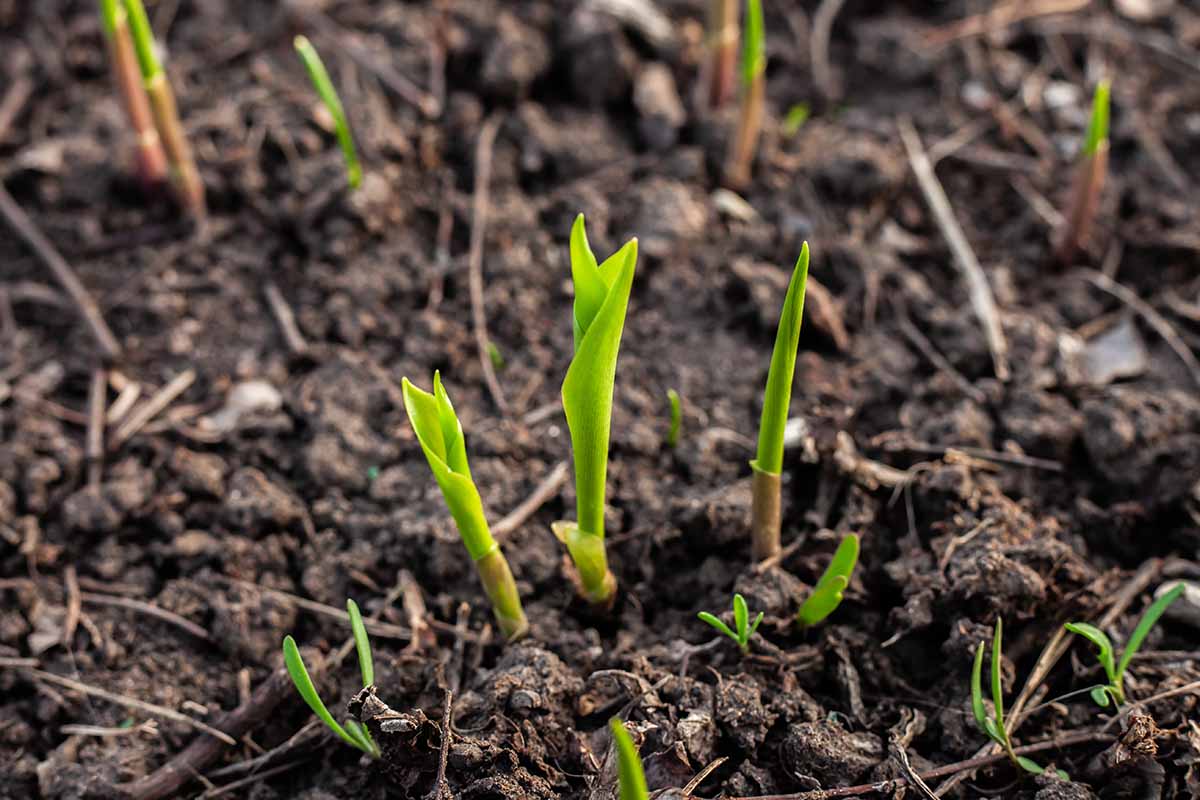
The results are similar to overcrowding: not enough oxygen in the soil and poor water infiltration, causing the roots and foliage to struggle, which reduces flowering.
To aerate the soil, in late winter use an aerating tool or your garden fork to revive beds and breathe new life into your plants.
Don’t worry about damaging the roots – the benefits of aerating the soil outweigh any minor damage you may cause, and the roots will grow back quickly.
The Walansee Lawn Spike has 15 sharp iron tines to quickly loosen the soil and is available at Walmart.
Easy Care Flowers
Easy-care lily of the valley is ideal for the shade garden and doesn’t require a lot of attention to thrive and produce oodles of fragrant flowers!

For the best flower production, give them the conditions they love – partial shade and well-draining soil – and keep the soil consistently moist in spring when the buds are forming.
Divide plants when they become overcrowded and aerate the soil if it becomes compacted to safeguard against lack of oxygen around the roots and poor water infiltration.
With just a little adjustment or two to their growing environment, these delightful plants will perform admirably!
Any questions about how to encourage your lily of the valley to flower? Drop us a note in the comments section below.
And for more information about flowers that thrive in shady locations, add these guides to your reading list next:
